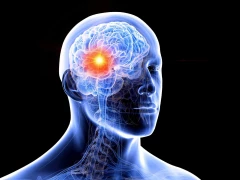
What is Brain Tumor?
- What is Brain Tumor?
- Brain tumor causes?
- How do primary brain tumors develop?
- What are the risk factors?
- How is the diagnosis made?
- How is the treatment done?
- Radiation therapy
- Chemotherapy
- Targeted drug therapy
Brain tumor is the growth of abnormal cells in the brain.
There are many types of tumors that arise in the brain. Not all brain tumors are cancerous (benign), some brain tumors are cancerous. Brain tumors that start in the brain (primary brain tumors), cancers that start in other parts of the body and can spread to the brain as metastatic brain tumors.
Brain tumors grow at very different rates. The location and speed of a brain tumor determines how it affects the functioning of the nervous system.
Treatment options for brain tumors depend on the type, size, and location of the brain tumor.
The symptoms of brain tumors vary greatly depending on the size, location and growth rate of the brain tumor.
Common signs and symptoms caused by brain tumors include:
- New or differentiating headache
- More frequent and severe headaches
- Nausea or unexplained vomiting
- Blurred vision
- Loss of feeling in an arm or leg
- Difficulty maintaining balance
- Difficulty speaking
- Feeling exhausted
- Confusion in daily life
- Seizure
- Difficulty in making decisions
- Personality and behavioral changes
When should I go to the doctor?
If your worrying signs or symptoms persist, talk to your doctor.
Brain tumor causes?
They occur in the brain itself, known as primary brain tumors, or in the cranial nerves, pituitary gland, and the membrane covering the pineal gland or nearby tissues.
How do primary brain tumors develop?
It occurs when the DNA of normal cells in the brain changes (mutates). A cell's DNA contains instructions that tell the cell what to do. Mutations cause cells to grow and divide rapidly. As a result, an abnormal mass of cells develops that forms the tumor.
In adults, primary brain tumors are much less common than secondary brain tumors (starting elsewhere in the body and spreading to the brain).
There are several types of primary brain tumors. Each tumor is named according to its corresponding cell type.
Secondary brain tumors are more common in people with a history of cancer. Rarely, metastatic brain tumors may be the first signs of cancer occurring elsewhere in the body.
In adults, secondary brain tumors are much more common than primary brain tumors.
All cancers can spread to the brain, the most common types are:
- Breast cancer
- Kidney cancer
- Melanoma
- Lung cancer
- Colon cancer
What are the risk factors?
In most people who develop a primary brain tumor, the causes of the tumor are unknown. However, doctors say there are several factors that can increase brain tumor risks.
Risk factors include:
- Exposure to radiation. Exposure to a type of radiation known as ionizing radiation increases a person's risk of developing a brain tumor. Examples of ionizing radiation include radiation therapy to treat cancer, which includes exposure to radiation.
- Genetic history of brain tumor. Brain tumors may develop in people with a family history of brain tumors or a family history of genetic syndromes that increase the risk of brain tumors.
How is the diagnosis made?
If a brain tumor is suspected, the doctor may perform a number of tests and procedures such as:
- Neurological examination. Neurological tests may include, but are not limited to, vision, hearing, balance, coordination, strength, and reflex tests. Difficulties in one or more areas may provide clues as to which parts of the brain may be affected by a brain tumor.
- Imaging tests. Magnetic resonance imaging is widely used to diagnose brain tumors. Dye can be injected into the vein from the arm during this scan.
- Sometimes other imaging tests such as computed tomography or positron emission tomography may be recommended.
- A sample of abnormal tissue is taken and examined (biopsy). A biopsy may be done to remove a brain tumor. Alternatively, a biopsy can be performed with a needle.
- Needle biopsy can be performed on brain tumors in hard-to-reach or very sensitive areas of the brain and may be damaged by more extensive surgery. The neurosurgeon makes a small hole in the skull. A thin needle is then inserted into the hole. The tissue is removed with a needle and is usually guided by a CT scan or MRI.
The biopsy sample is then examined under a microscope to determine if it is cancerous or benign. Thus, advanced laboratory tests can provide the doctor with clues to prognosis or treatment options. Examining the biopsy sample to determine the exact type of brain tumor is a complex process. If the diagnosis is uncertain, consider seeking a new opinion at a medical center where multiple brain biopsies are evaluated each year.
How is the treatment done?
Treatment of brain tumors depends on the type, size, location of the tumor, overall health, and preferences.
Operation
If the brain tumor is within reach for surgery, the surgeon will try to remove the brain tumor as safely as possible.
Some brain tumors are small and can be easily separated from the surrounding brain tissue for complete surgical resection. Some brain tumors cannot be separated from the surrounding tissue or are close to sensitive areas of the brain, making surgery dangerous. In such cases, the doctor will remove the tumor, if possible.
Partial resection of a brain tumor can also provide symptom relief.
Surgery to remove a brain tumor carries risks such as infection and bleeding. It may also vary depending on the brain region where the tumor is located. For example, surgery for a tumor near the nerve that connects to the eye may pose a risk of vision loss.
Radiation therapy
Radiation therapy uses rays such as x-rays and protons to destroy cancerous cells. Radiation therapy may be given using a device outside the body (external radiation) or, very rarely, radiation may be placed inside the body near the brain tumor.
Radiation from external beams can be focused only on tumor areas of the brain or applied to the entire brain. Whole-brain radiation treatments are often used to treat cancer that has spread to the brain from other parts of the body and forms multiple tumors in the brain.
Traditionally, X-rays have been used in radiotherapy, but a new form of this therapy uses protons. Proton therapy allows the doctor to administer radiation more precisely. It is useful in the treatment of brain tumors in children and in removing tumors that are very close to sensitive areas of the brain. Proton therapy is less common than conventional X-ray radiation.
The known side effects of radiation therapy depend on the type and amount of radiation you receive. Common side effects during or immediately after radiation therapy include headache, fatigue, and scalp irritation.
Chemotherapy
Chemotherapy is drugs used to destroy cancer cells. Chemotherapy drugs can be taken orally as tablets or injected into a vein. The most common chemotherapy drug used to destroy brain tumors is temozolomide. Depending on the type of cancer, other chemotherapeutic drugs may be recommended.
The side effects of chemotherapy depend on the type and amount of medicine you take. Chemotherapy can cause nausea and hair loss.
Your brain tumor cell test can tell if chemotherapy is helping you. The type of brain tumor you have can also help you decide whether to get chemotherapy.
Targeted drug therapy
Targeted drug therapy focuses on specific abnormalities found in cancer cells. Targeted drug therapy can block these abnormalities and kill cancer cells.
Targeted therapies are available for some types of brain tumors, while others are being studied in clinical trials. Doctors can examine cancer cells to see if targeted therapy is an effective treatment for brain tumors.





